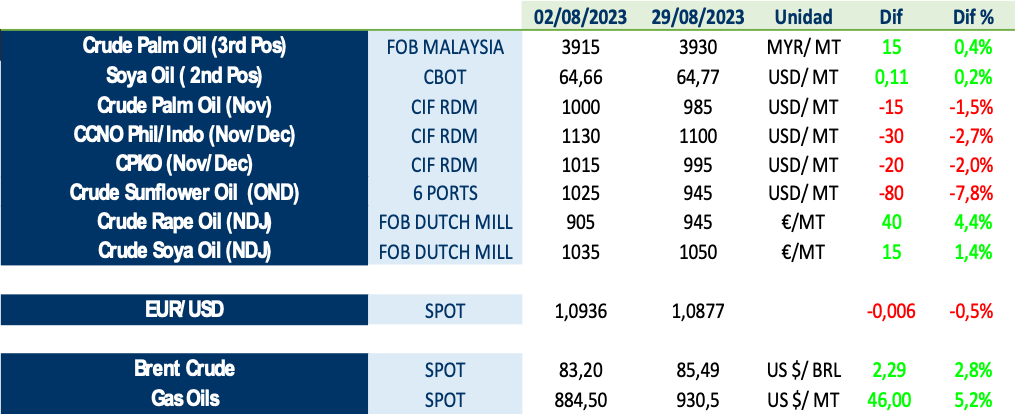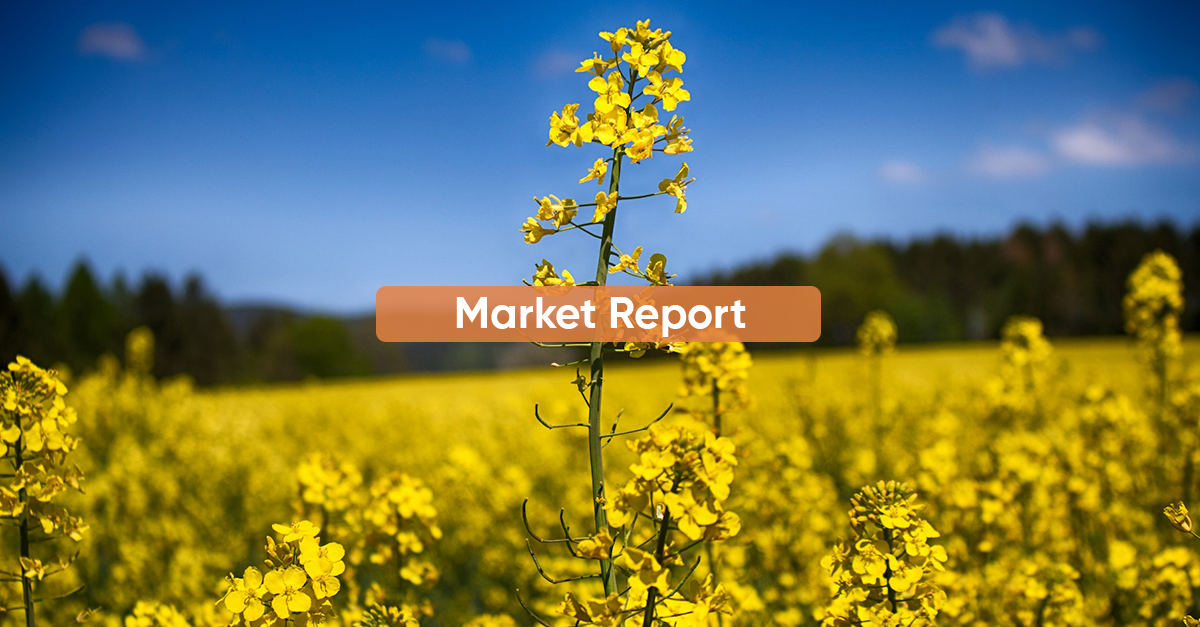In the last 4 weeks, oil prices have behaved unevenly, with falls in most of them, more pronounced in the case of sunflower and rises in rapeseed, while palm oil is flat. The following table shows prices at the beginning and end of August:

· Global palm oil production declined slightly in April-June 2023 compared to 2022, contrary to earlier expectations of an increase.
· There are concerns about high temperatures and dryness in the US Midwest and northern plains this past fortnight.
· Argentine production is expected to benefit from El Niño. On the other hand, there are concerns about the lack of rainfall in central Brazil.
· Estimates for this year’s canola crops in Canada and Australia still vary widely. European rapeseed has shown disappointing final yields.
· Weather has been largely favourable in the last 2 months in Russia and Ukraine. In contrast, Bulgaria, Romania and Argentina are experiencing the opposite situation.
In relation to the El Niño weather phenomenon in Southeast Asia, negative impacts on seasonal rainfall are likely to be strongest and most consistent in Indonesia, Malaysia and the Philippines. For August to December 2023, model forecasts support this outlook. In Central America, drier and warmer conditions have prevailed over the past few months. During the ongoing El Niño event, adverse weather conditions may continue, affecting palm production in this region.
To learn more about the market situation, we invite you to read LIPSA’s market report, which you can download by clicking on the button above, where we discuss the following points:
1. Vegetable oils markets
2. Production highlights in oilseeds and vegetable oils
3. Palm oil
4. Soybean oil
5. Sunflower oil
6. Rapeseed oil
